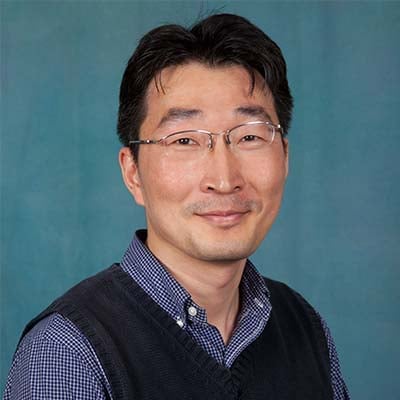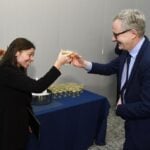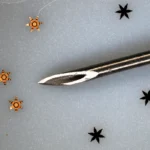“Tissue-on-a-Chip” headed to Space to Study Aging and Heart Disease

Deok-Ho Kim’s ISS experiment will test medications in low gravity
Space travel takes a toll on the human body. In fact, it’s estimated that spending six months in microgravity can age organs and bones at least 10 years.
But for a team of Johns Hopkins scientists, the acceleration of aging in space provides a unique opportunity to better comprehend the condition that remains the leading cause of death in America: heart disease.
“Human aging is very difficult to study because it takes a long time to see if any therapeutics make an impact,” says Deok-Ho Kim, a professor of biomedical engineering and associate researcher at the Institute for NanoBioTechnology. But, he notes, in a low-gravity environment where cardiovascular dysfunction occurs much more quickly, its progression can be closely monitored.
In March, Kim and other JHU researchers sent human heart “tissue-on-a-chip” specimens to the International Space Station, or ISS. During its month there, the heart muscle tissue was treated with three different FDA-approved medications to determine how each one might slow the aging process.
As the researchers begin to analyze the results, they’re hoping to answer some key questions. “We’ve started to piece together a puzzle that seems to illustrate that mitochondrial dysfunction actually leads to the cardiovascular dysfunction,” says PhD student Devin Mair. “And if we’re able to narrow all this damage down to one specific area, such as mitochondrial dysfunction, one drug should be able to fix the problems associated with it.”
A key function of mitochondria within cells is to produce energy from food. They also mediate the growth and death of cells. But unstable molecules called reactive oxygen species, which accumulate in the body as it ages, can damage mitochondria. Research suggests that these molecules develop more quickly during spaceflight.
The recent visit to the ISS was actually a follow-up to one in 2020, when Kim’s team found that after only 30 days in space, heart muscle contractions grew weaker and measures of arrhythmia, or irregular heartbeat, increased. That’s when the researchers first noticed signs of mitochondrial dysfunction in the heart cells.
What they learn from the project could not only advance treatment of heart disease on Earth but also help protect astronauts from the deleterious effects of prolonged space missions, such as the planned crewed Mars mission, which could last more than three years, including the travel time.
That’s part of the appeal of the research for Kim, who has been working on this project since 2018. “My research focused on making the organ-on-a-chip for disease modeling and drug screening,” he says. “But this unique opportunity to study human organ physiology in space was so intriguing to me. When I was young, I always dreamed of travel to space.”
Still, it’s no small challenge to conduct science 250 miles above Earth. “With ‘normal’ research projects, you typically can run some experiments, gain some data, run some more experiments, gain some more data. And you can do this over the course of months or years,” Mair explains. “Here, we have one experiment, and we have to get it right. And we have to try to get all the information that we possibly can all at once.”
Also, any hands-on aspect of the research must be handled by the astronauts. That’s a simple reality of ISS science projects, according to Danilo Tagle, director of the Office of Special Initiatives at the National Center for Advancing Translational Sciences. It’s part of the National Institutes of Health, which has provided funding for the project.
Tagle remembers being advised by an astronaut to keep experiments on the ISS “fighter pilot–proof”; in other words, make them as turnkey as possible. “There’s no babysitting involved,” he says. “Make it so they can slide chips in, push buttons, and walk away.”
That means designing research devices that are highly automated and also shrunken in size to limit their footprint in the space station. In the Hopkins experiment, that required reducing equipment that’s ordinarily the size of a refrigerator to the size of a shoe box.
Still, for all the challenges and anxieties that come with doing science in space, the payoff, when it comes together, can be profound, Mair says. “You’re stressing about it constantly, and there’s so much work you have to do, but then just seeing that it’s all working. It’s just an incredible feeling,” he says.
For Kim, there’s satisfaction in contributing to the science of human aging as well as value in sparking the interest of future scientists. “I’m not only a research scientist; I’m also an educator,” he says. “These findings and discoveries can inspire the younger generation. My wish is that they find this intriguing and become interested in space biology.”
Story by Randy Rieland.





